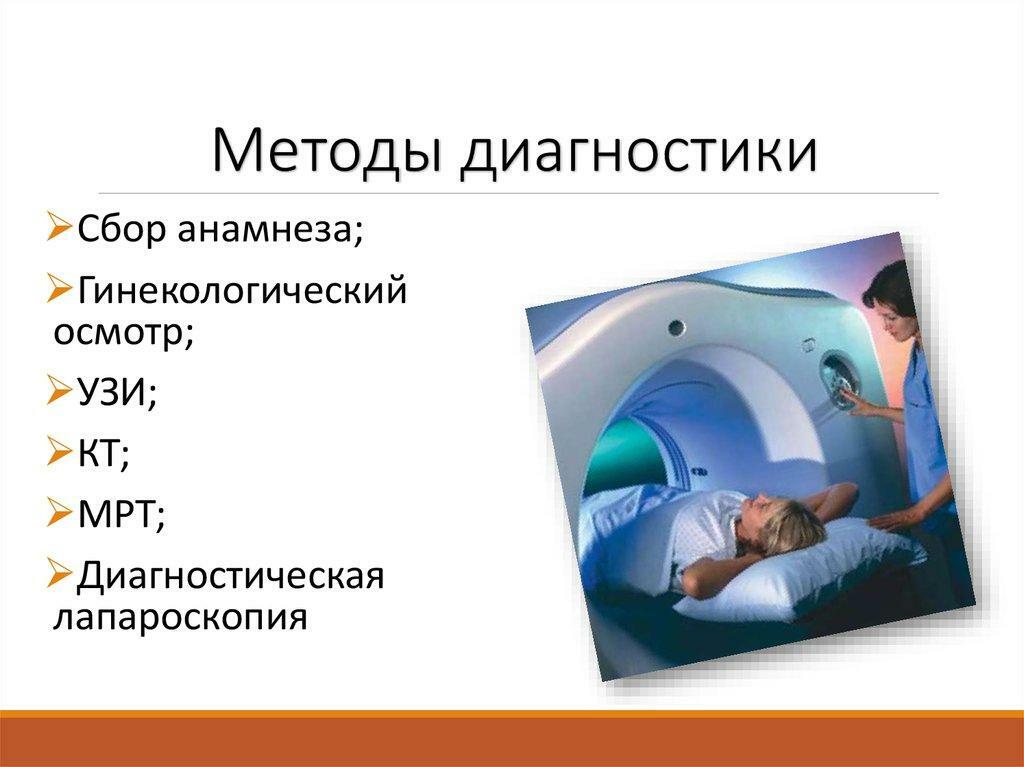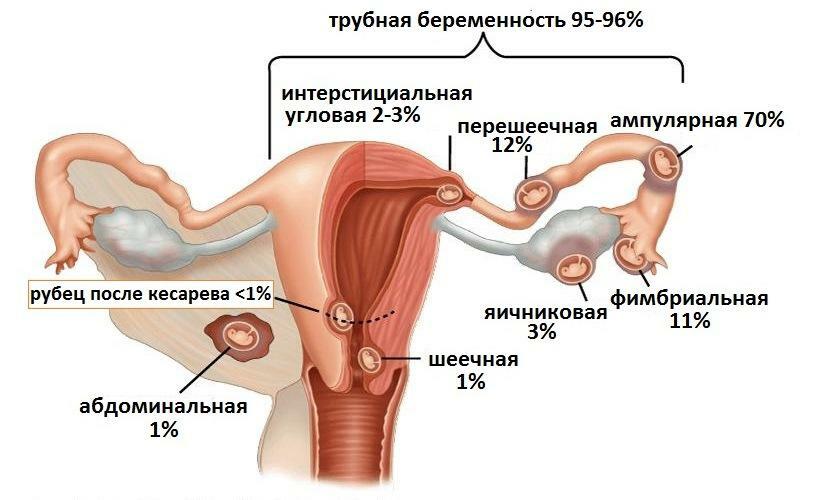This symptom, like chest pain that occurs with deep breathing, is often taken by people for a purely pulmonary problem. However, there are a number of pathologies that are not related to the respiratory system, the manifestation of which is pain during inspiration.
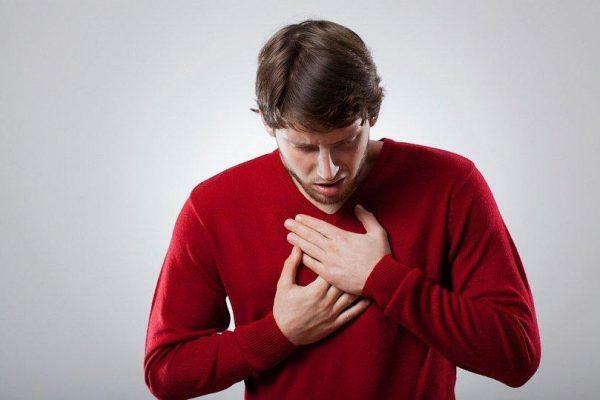
pain in the chest with a deep breath
Content material
- 1 Pathology of the musculoskeletal system
- 1.1 osteochondrosis
- 1.2 intercostal neuralgia
- 1.3 broken ribs
- 2 heart Pathology
- 2.1 Pericarditis
- 2.2 Pulmonary embolism
- 3 pathology of the gastrointestinal tract
- 4 Pulmonary pathology
- 4.1 Pleuropneumonia
- 4.2 Pleurisy
- 4.3 Pneumothorax
- 5 Comparative characteristic of
- 5.1 Video - Whychest hurts
- 5.2 Video - 3 deceptive pains in the heart. What hurts in the chest
Pathology of the musculoskeletal system
The thorax is formed:
- sternum;
- ribs;
- with collarbones;
- by the thoracic spine.

Structure of the chest
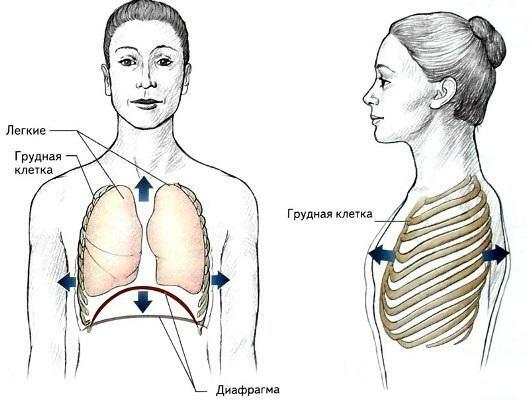
Human thorax
The bone apparatus is surrounded by muscle mass, permeated with nerve fibers. All these formations can become a source of pain. And with a number of pathologies of the musculoskeletal system, pain occurs precisely with a deep inspiration. The reason for this - the movement of the chest during breathing.
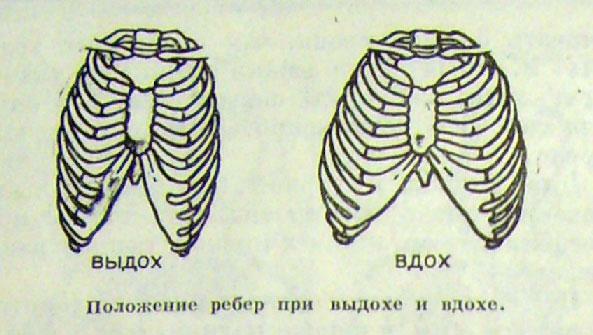
The position of the ribs at the entrance and exhalation of the
During inhalation, it rises and expands, which can lead to painful sensations in some pathologies.
Osteochondrosis
Degenerative pathology of the spine, which affects more than half of the adult population of the planet. At an osteochondrosis there are atrophic changes of an intervertebral disk. The pelvic nucleus of the disc loses its elasticity due to its pronounced hydrophilic properties. Moisture leaves, the disc becomes less elastic and more flattened.
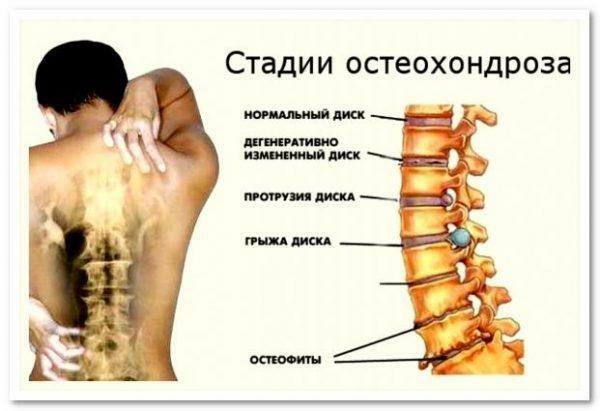
Stages of osteochondrosis
Fibrous ring, normally supporting the proper volume of the pulpous core, also suffers. Due to the displacement and approaching adjacent vertebrae on the ring, radial cracks may appear. The ligaments supporting the vertebral segment are destroyed. Develops its instability, vertebrae are shifted, causing radicular syndrome with pain.
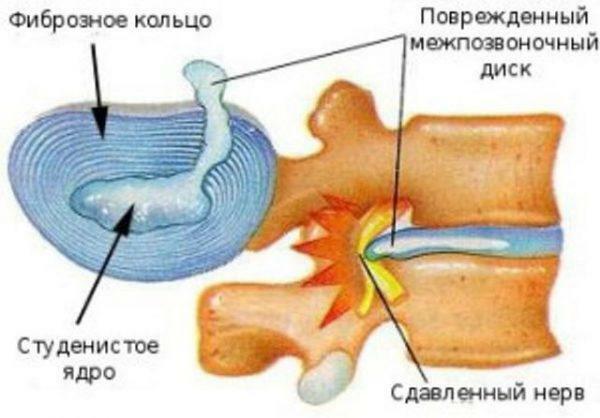
Osteochondrosis of the thoracic spine
Similar changes in varying degrees occur in all people over the course of the age. They are more pronounced in the presence of excess weight, irrational physical activity, long-term sedentary lifestyle. Pain in the chest on inspiration appears with osteochondrosis of the thoracic spine, when the movement of the chest affects affected vertebral segments.
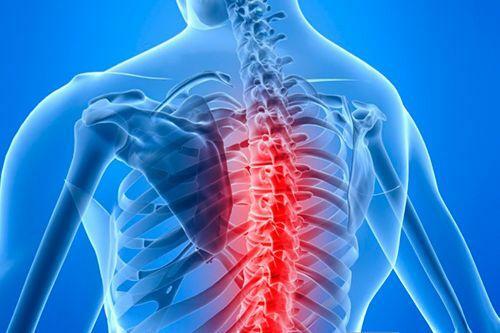
Pain localization
Important! Pain in osteochondrosis irradiates into the interlopar area or upper limbs.
Intercostal neuralgia
A vascular bundle of nerves passes along the lower edge of all the ribs. Nerves passing through it are often a source of neuralgia.

Intercostal neuralgia
The etiology of this lesion is different:
- hypothermia;
- infringement;
- infection;
- irritation.
The most common episodes of intercostal neuralgia in the background of osteochondrosis of the spine.
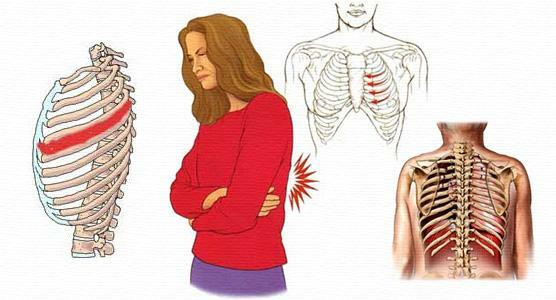
Pain in intercostal neuralgia
A little less often the pain is caused by herpes zoster - herpetic infection. Activation of the herpes virus can be triggered by hypothermia and always occurs against the background of a natural decrease in immunity:
- in the elderly;
- for diabetes mellitus;
- for primary and secondary immunodeficiencies.
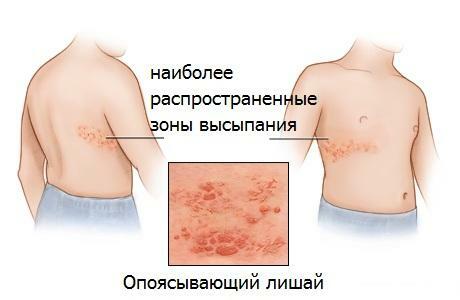
Shingles( Herpes zoster)
With intercostal neuralgia, the pain is constant, it is localized from the side of the lesion. Its reinforcement on inspiration is also associated with the movement of the thorax, in particular, the ribs. By nature, the pain is strong and burning, irradiating along the entire length of the nerve fiber, from the sternum to the spine.
Fracture of ribs
Closed chest trauma in more than half of the situations is complicated by rib injuries. More often it occurs in the elderly, which is explained by the increased brittleness and fragility of bones. Depending on the number of broken ribs, a person's condition can be from an average severity to a very heavy one.
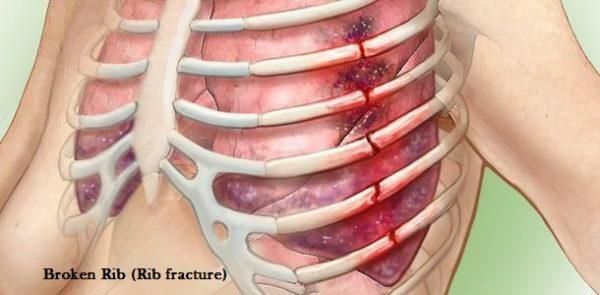
Fracture of ribs
Fractures of 1-2 ribs usually do not take place very hard, they do not need inpatient treatment. With fractures of 3 or more ribs, the risk of damage to the organs of the chest increases: the heart, lungs, large vessels. Multiple bilateral fractures always require emergency medical care.
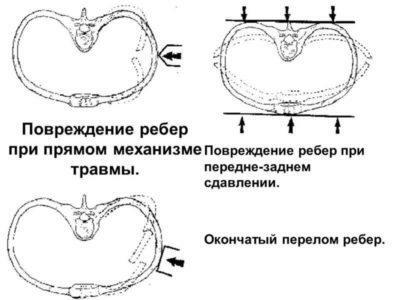
Rib fracture mechanism
Chest pain associated with fracture of the ribs is localized at the site of the impact or suspected fracture. It intensifies even with shallow breathing and coughing, which can lead to forced hypoventilation and pneumonia.

Pain in fracture of the ribs
Heart pathology
Chest pain associated with breathing may be a sign of one of the dangerous pathologies of the heart or vessels. Often there are myocardial infarction or angina pectoris, but they are characterized by persistent pressures that are not associated with breathing. Let us examine in more detail precisely those pathologies in which soreness appears or is strengthened by inhalation.
Important! For any pain in the chest, people older than 40 years of age should undergo electrocardiography.
Pericarditis

Pericarditis of the heart
Pain on inspiration accompanies only dry pericarditis. With it on the leaves of the pericardium, fibrinous adhesions are formed in large numbers, which significantly impair the friction of the leaves during palpitation. There are sharp, painful sensations that intensify with deep breathing.

Location of the pericardium
The causes of dry pericarditis are diverse:
- systemic diseases: systemic lupus erythematosus, rheumatoid arthritis, scleroderma;
- terminal chronic kidney disease, at which urate deposition occurs on pericardial sheets;
- gout, with the deposition of salts of uric acid;
- tuberculosis.
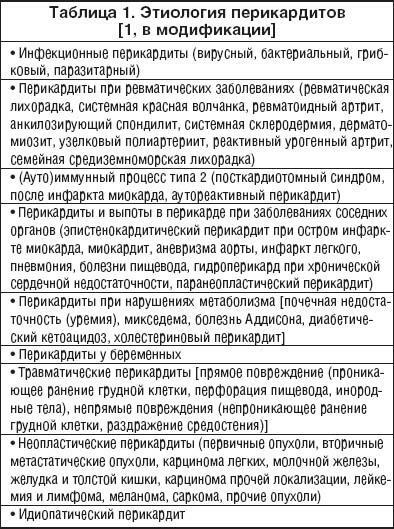
Pericarditis, etiology
In addition to chest pain, pericardial disorders can occur rhythm disturbances: paroxysmal tachycardia, extrasystole. A person is worried about fatigue, shortness of breath, a feeling of disruption in the work of the heart. Without treatment, dry pericarditis over time can develop into exudative.
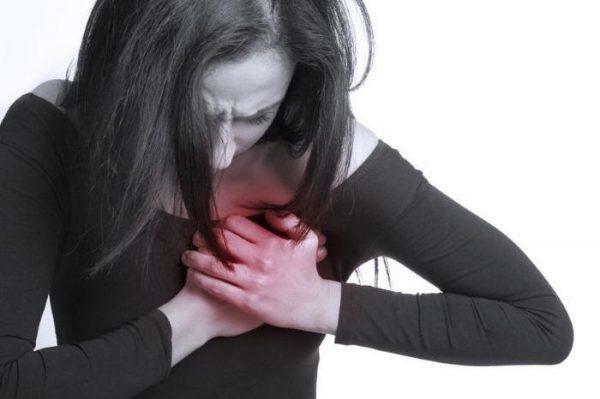
Pericardial pain
Pulmonary embolism of the
One of the life-threatening pathologies that requires emergency medical attention. It is not a question of the lightning-fast form of thromboembolism of a large pulmonary artery trunk, at which a reflex stop of cardiac activity occurs.

Thromboembolism of the pulmonary artery
The chest pain is more common in inspiration for the emboli of small branches that can cause recurrent infarct-pneumonia. It is typical for her pain in the chest, poured, with an increase in inspiration. In addition to pain, a person is disturbed by a cough, possibly with rusty sputum, high fever. Symptoms of respiratory failure may appear.

Symptoms of pulmonary embolism of the pulmonary artery
Pulmonary thromboembolism almost always occurs against a background of well-being. But, at inspection, it is possible to reveal provoking reasons:
- a deep vein thrombosis;
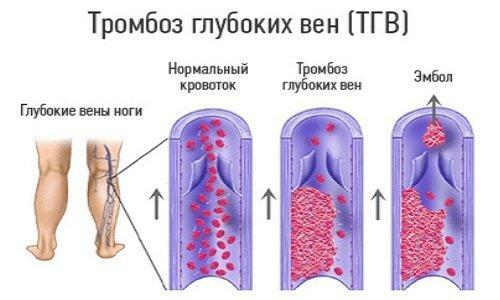
Deep vein thrombosis
- cardiac pathologies in which emboli can be formed: atrial fibrillation, cardiomyopathy;
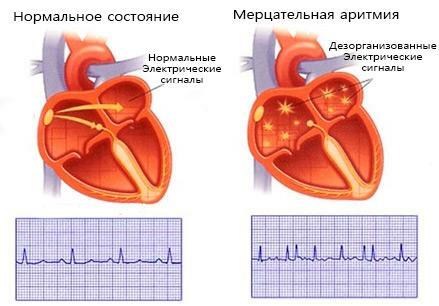
Schematic explanation of arrhythmia
- oncological pathology;
- antiphospholipid syndrome;
Antiphospholipid syndrome
- various thrombophilia.
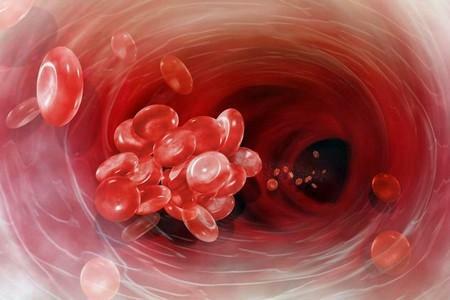
Thrombus in the vessel
Important! Contributes to the appearance of the embolus, a prolonged immobilization, associated, for example, with a multi-hour flight or a complex operation.
Gastrointestinal pathology
A number of problems with the gastrointestinal system can cause chest pain on inspiration:
- gastroesophageal reflux disease, esophagitis, hernia of the esophagus of the diaphragm - pain burning, pressing. Localized in the central and upper chest. It is combined with eructations and regurgitation;

Gastroesophageal reflux disease( GERD)
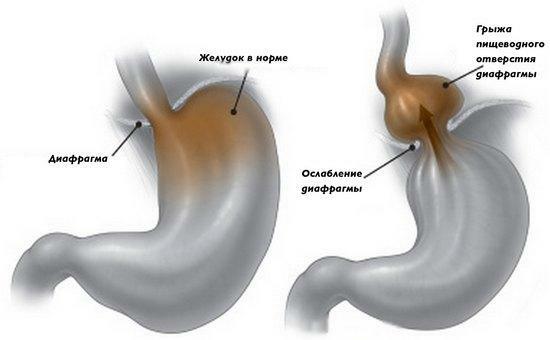
Hernia of the esophagus of the diaphragm
- gastritis, gastric ulcer - pain predominantly in the center, combined with a sense of rapid satiety, nausea, belching;
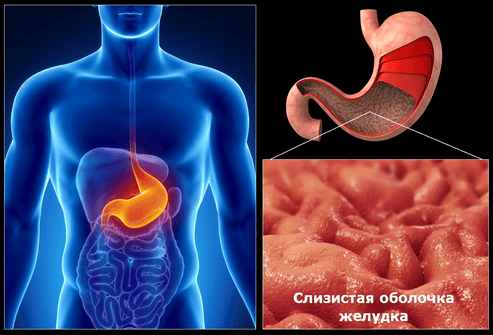
Gastritis
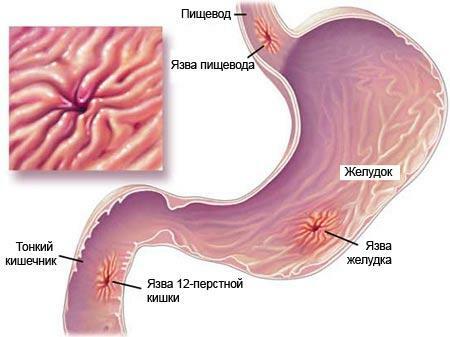
Stomach Ulcer
- duodenal ulcer, pancreatitis - pain in the lower part of the chest, more on the left. Characteristic of night attacks, and also after 2-3 hours after eating;
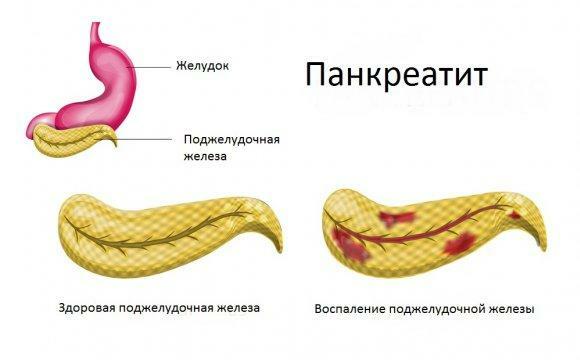
Pancreatitis
- cholecystitis - soreness in the lower part of the thorax to the right. It is combined with a feeling of heaviness in the hypochondrium, a feeling of bitterness in the mouth, nausea.
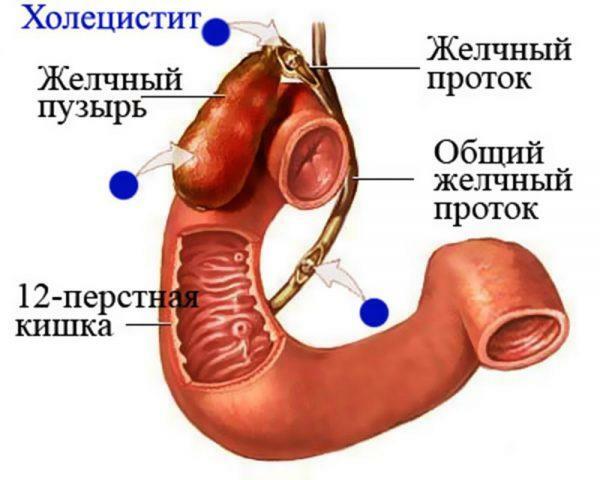
Cholecystitis - inflammation of the gallbladder
Pulmonary pathology
The pulmonary tissue of pain receptors does not have a proper pathology, its pathologies do not show painfulness, if not affect the pleura. Among all the organs of the respiratory system, the pleura is most innervated, which means that the pain sensations are associated with its defeat.
Pleuropneumonia
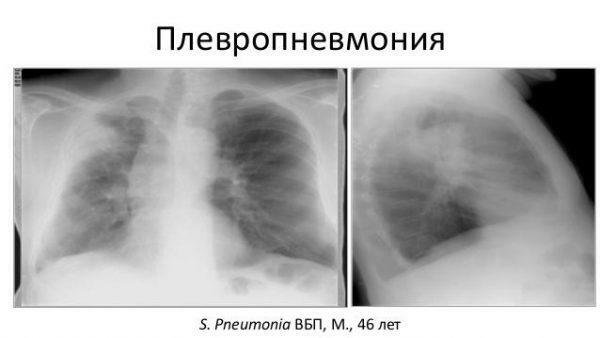
Pleuropneumonia
In some cases, the focus of inflammation in pneumonia may be located close to the pleural cavity. Then the inflammation passes to the pleura, causing pain. It can be permanent, but can only appear with deep breathing. In any case, coughing and forced breathing significantly increase pain.
In addition to the pain of a person concerned:
- symptoms of intoxication - weakness, fatigue;
- high temperature;
- cough, usually with phlegm.
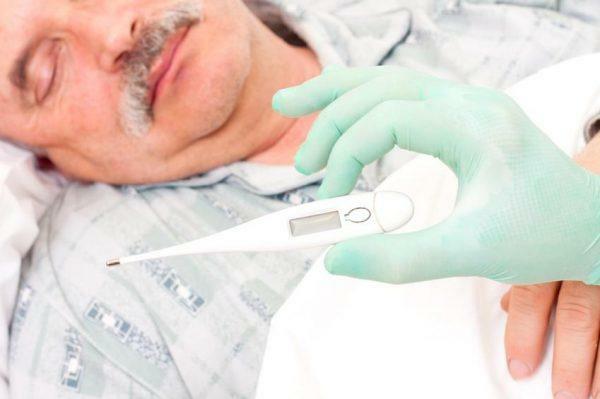
High temperature - symptom of pleuropneumonia
In case of massive pneumonia on the area, symptoms of respiratory failure may appear - dyspnea, cyanosis, reduction of saturation. The disease is most serious in the elderly, children and people with immunodeficiencies.
Important! The most common pneumonia is caused by Streptococcus pneumoniae.
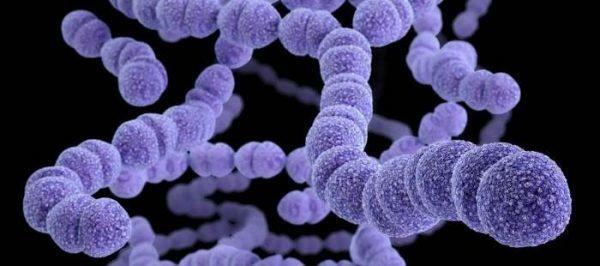
Streptococcus pneumoniae
Pleurisy
Pain in the chest on inspiration is more characteristic for dry pleurisy. Its morphology is very similar to dry pericarditis: fibrinous threads deposited on the surface of the pleura. They make the friction of the pleura sheets painful. The pain increases with breathing, as well as the slightest cough, when tilted to a healthy side.

Pleurisy
The state is reversed by tilting to the side of the affected lung. Thus, the tension of the inflamed pleura leaves decreases. Also, a person with pleurisy becomes lighter when he lies on the side of the inflammation. At the same time, the excursion of the affected side of the chest decreases, which alleviates the pain.

Pleural pain
In addition to pain, there may be inflammation symptoms:
- high fever;
- weakness.
Often with pleurisy there is a dry reflex cough. The causes of fibrinous pleurisy can be:
- tuberculosis;
- chronic kidney disease;
- Dressler's syndrome;
- systemic diseases.

Complications from pleurisy
Pneumothorax
Another pulmonary cause of chest pain on inspiration. At the same time, the painful sensations are extremely sharp, sharp, sudden.
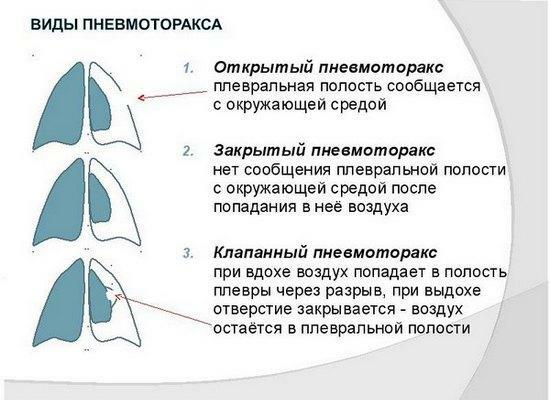
Types of pneumothorax
Pneumothorax can be:
- open - with the contact of the pleural cavity and the environment;
- closed - the pleural cavity with the environment does not contact;
- Valve - the air is inhaled inhaled into the cavity, and on exhalation does not come out of it, gradually "pushing" the lung.
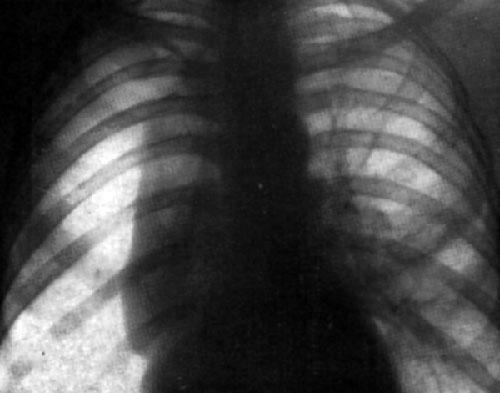
Spontaneous pneumothorax on the right

Scheme of open pneumothorax
In addition to pain, a person is concerned about the severe symptoms of acute respiratory failure:
- dyspnea;
- cyanosis.
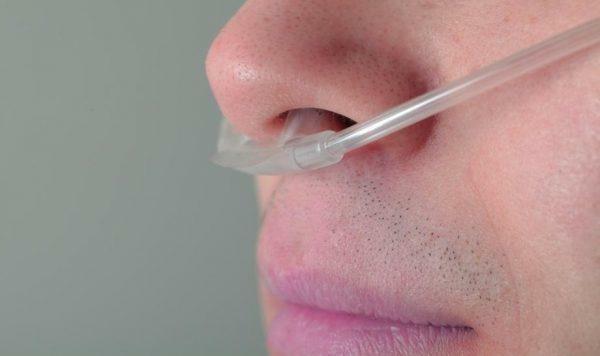
Cyanosis( blue lips and skin)
With massive pneumothorax, movement of the mediastinal organs can occur in the direction of the asleep lung. This will manifest itself with symptoms of cardiovascular shock, can lead to cardiac arrest.
Among the causes of pneumothorax are:
- injuries with broken ribs;
- lung tumors;
- Bullous disease is the source of spontaneous pneumothorax in young people.
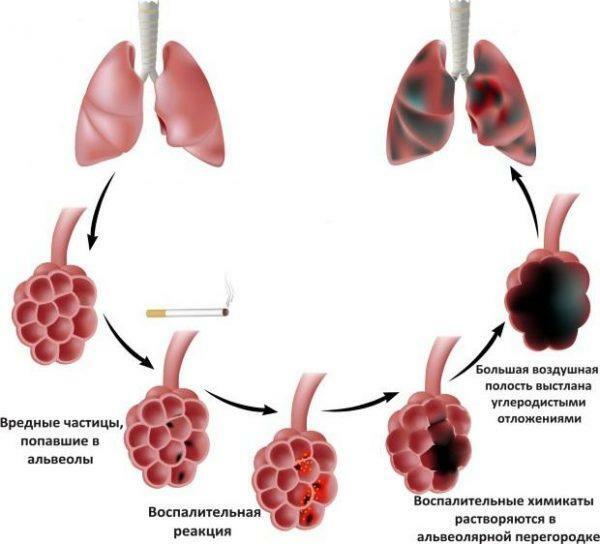
Bullous Disease
Important! With valve pneumothorax, it is possible to change the position of the mediastinal organs, moving the side of a healthy lung.
Comparative characteristic
At the end, we give a table in which we summarize the main data on the most common causes of chest pain, depending on the breath.
| disease | circumstances preceding pain | pain radiating | necessary examinations |
|---|---|---|---|
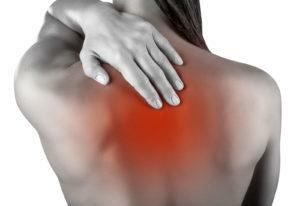 osteochondrosis | -voltage, long-term physical | load in the arms, shoulders, back | X-ray of the thoracic spine, computed tomography |
 Rib fractures | Trauma chest | cells in place | Radiography |
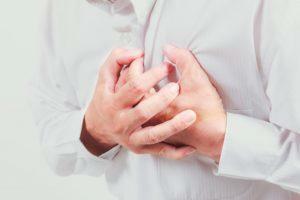 fracturePericarditis | Infection, CKD | In the left half of the thorax | Radiography, ECG, ECHOX |
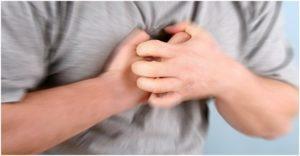 TELA | Venous thrombosis, lengthImmobilisation, flight, against a background of complete well-being | Across the chest or locally | Chest X-ray, angiopulmonography, determination of the D-dimer concentration |
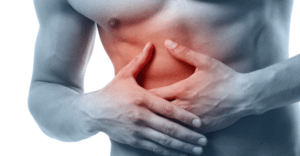 Cholecystitis | Dysfunction, gallstone disease in the history of | Into the epigastric region, in the right vertebral | ultrasound examination |
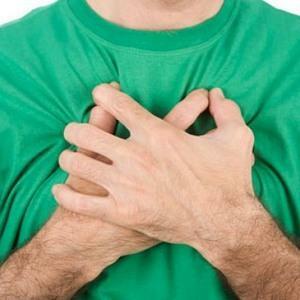 ultrasound | pleura | infection | pleurisy side X-ray, ultrasound |
 Pneumothorax | Injury oron the background of full well-being | To the affected side of the chest | Radiography, computed tomography |


